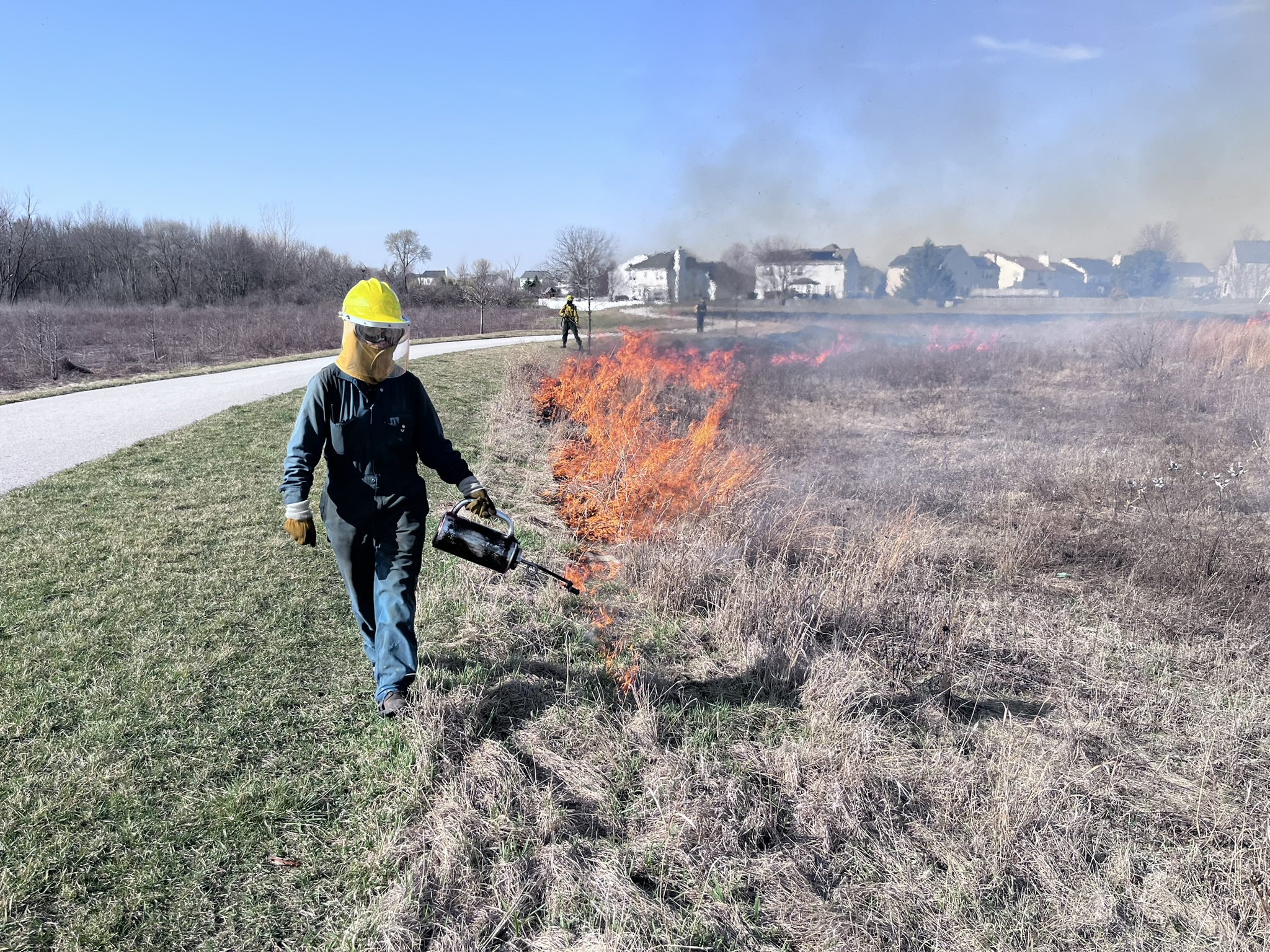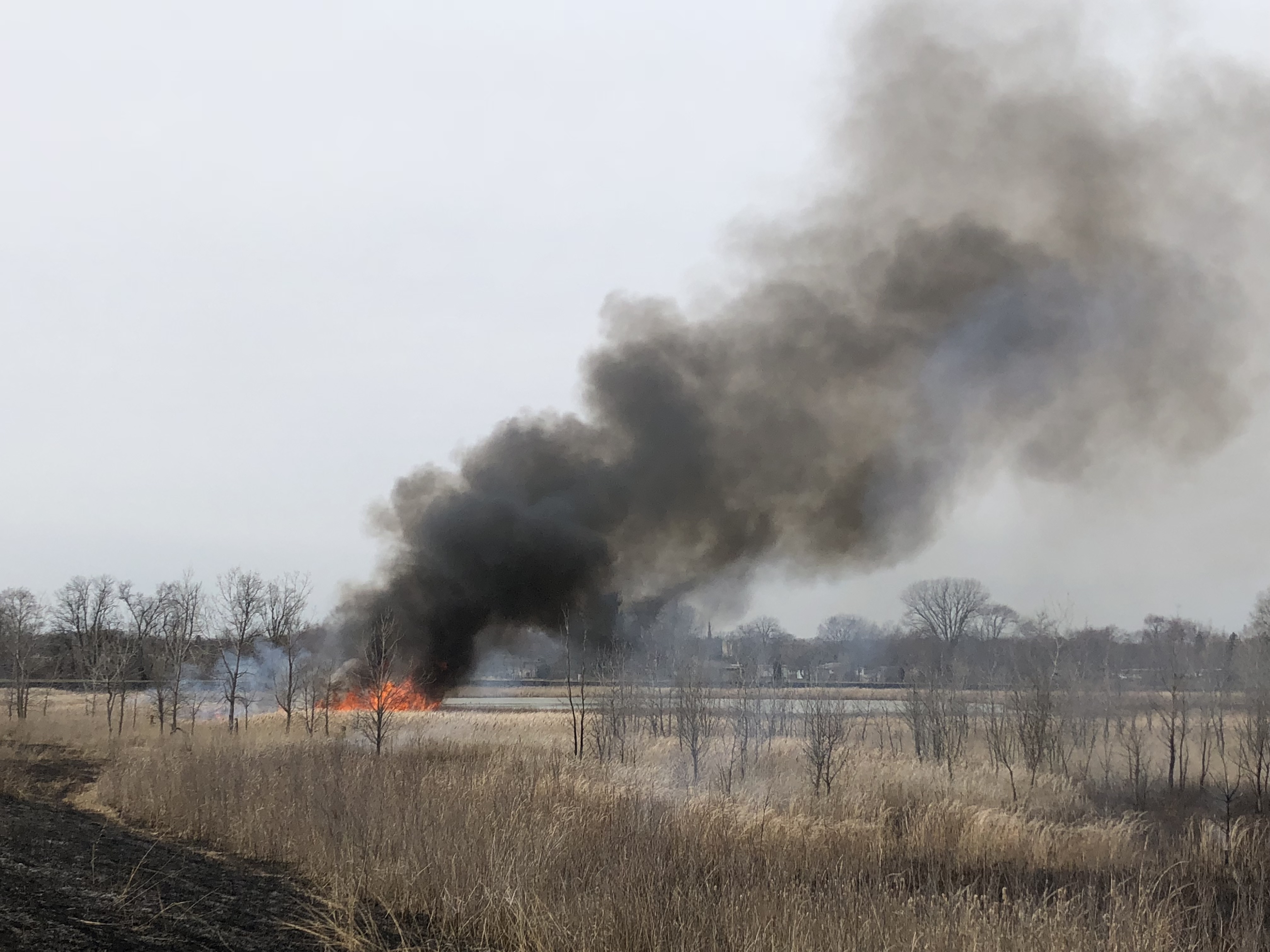Controlled Burning
Controlled burning, also known as prescribed burning, is used to eliminate weedy woody species prior to additional management and restoration efforts within a conservation area. Controlled burns improve the native plant communities by reducing invasive plant species that can invade wetland and prairie areas and degrade them. Prescribed burning also promotes the germination and growth of many native plant species that are adapted to and require periodic fire to maintain healthy natural communities. Prescribed burning is a widely used technique for the ecological restoration and management of wetlands, woodlands and prairies throughout the Midwest.
Controlled burning is planned at the following locations around Naperville this fall:
- Old Plank Park
- Country Commons Park
- Naperville Auto Test Track
- Public Works Service Center
- What to Expect
-
Burns vary in size depending on the location and material being burned. Residents near a prescribed burn can expect smoke.
V3 Construction will notify residents adjacent to the controlled burn areas by mail before burning takes place. V3 Construction will work with residents who have medical issues that could be affected by smoke and will make plans to accommodate those medical needs.
Residents near the impacted areas who have signed up for Naper Notify will receive a notification before burning takes place. While a Naper Notify notification will be sent to areas near the burn sites, the weather conditions may make it difficult to predict which exact areas may smell smoke.
- Frequently Asked Questions
-
Why is the City conducting controlled burns?
A: The objective of controlled burning is to eliminate weedy woody species prior to additional management and restoration efforts within a conservation area. Controlled burns improve the native plant communities by reducing invasive plant species that can invade wetland and prairie areas and degrade them. Controlled burning also promotes the germination and growth of many native plant species that are adapted to and require periodic fire to maintain healthy natural communities. Controlled burning is a widely used technique for the ecological restoration and management of wetlands, woodlands and prairies throughout the Midwest. This technique is employed by the United States Forest Service, Forest Preserve District of DuPage County, the Nature Conservancy, and many other public and private organizations.Does the City notify the public before prescribed burns?
A: V3 Construction will notify residents adjacent to the controlled burn areas by mail before the burning takes place. V3 Construction will work with residents who have medical issues that would be affected by smoke and will make plans to accommodate those medical needs.Residents near the impacted areas who have signed up for Naper Notify will receive a notification before burning takes place. While a Naper Notify notification will be sent to areas near the burn sites, the weather conditions may make it difficult to predict which exact areas may smell smoke.
When do burns occur?
A: There are two controlled burn windows throughout the year. The fall burning window is typically, Nov. 1 through Dec. 31. The spring burning window is typically March 1 through April 30. Because weather conditions can fluctuate, burning can take place outside of these windows if conditions allow anytime outside of growing seasons and sometimes during.This fall (Nov 1-Dec 31) opens the first of their controlled burn windows for multiple sites around town. Once the window opens V3 can burn any day, weather pending.
Who is involved?
A: Controlled burns require permits and trained wildland fire fighters. Permits are provided by IEPA and the City of Naperville. Public and private organizations provide trained and experienced staff. In this case, the City of Naperville has hired V3 Construction to permit and perform burns.How long does a prescribed burn typically take?
A: Any burn ignited in the morning will be extinguished by the end of the day.How are sites chosen?
A: In 2023, the City began working with a consultant on the development of a native vegetation management program. In partnership with our consultant, V3 Constructions, the program began by evaluating five city-owned stormwater management areas with existing native vegetation. All five sites had degraded native plant communities due to a lack of ecological management. A management program was developed to restore these initial sites to a healthy condition.Doesn’t burning create pollution?
A: The best way to evaluate this question is to compare it to the alternative, which is mowing. When compared, periodic controlled burning has significantly less pollution than mowing. More impactfully, the types of carbon pollution are different. Mowing uses new carbon, from deep underground, that is not in earth’s natural carbon cycle, while controlled burns use carbon from within the carbon cycle. That carbon emitted during burning will be the same carbon used to generate new plant material during the next growing season (for prairie communities).How will the area look after a burn?
A: Not all controlled burns have the same goals or outcomes. After a burn you can expect to see a blackened landscape with between 50-100% fuel consumption. A typical burn will present a mosaic of burned and unburned vegetation. Site conditions and weather on the day of the burn have a significant influence on the results.Controlled burning has many benefits and each burn has a prescribed benefit. Some burns are used to control weed, germinate native seeds, or promote flower production. Other burns are used for seedbed preparation prior to restoring an area with new native seed. Each prescription changes when and how we burn and what that outcome will look like.
- Program Background
-
In 2023, the City began working with a consultant on the development of a native vegetation management program. In partnership with our consultant, V3 Constructions, the program began by evaluating five city-owned stormwater management areas with existing native vegetation. All five sites had degraded native plant communities due to a lack of ecological management. A management program was developed to restore these initial sites to a healthy condition.






